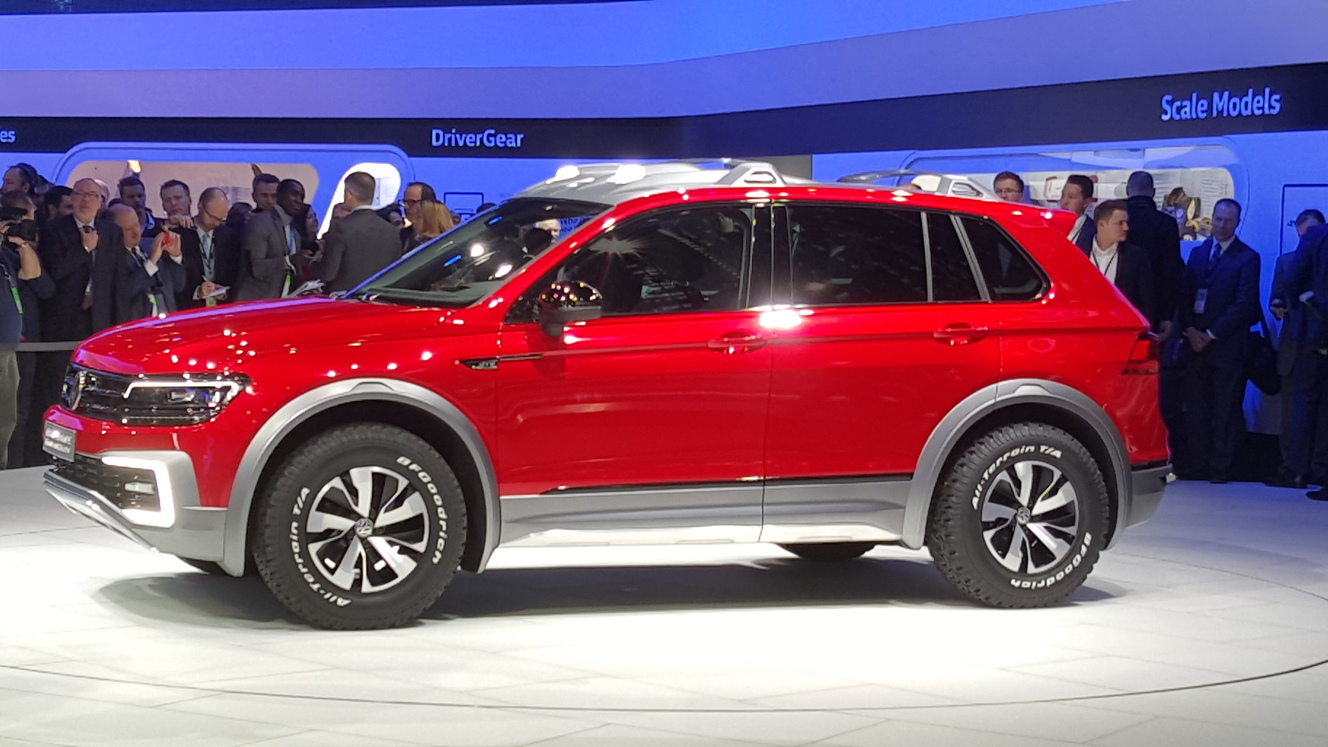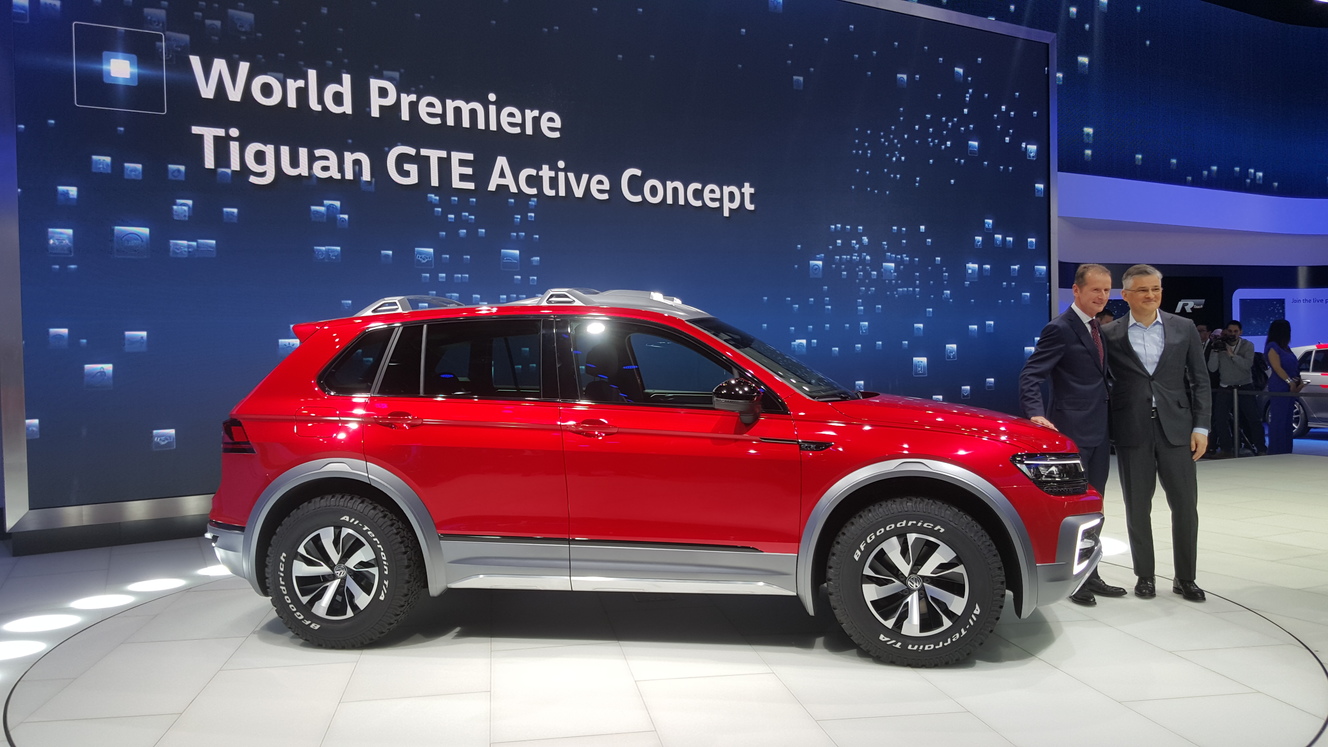Volkswagen is showing a concept called Tiguan GTE Active at the 2016 Detroit Auto Show. As its name implies, the show car hints at what a more rugged-looking version of the all-new second-generation Tiguan could look like.
Power for the Tiguan GTE Active concept comes from a gasoline-electric plug-in hybrid drivetrain made up of a 148-horsepower TSI turbo four, a 54-hp electric motor mounted on the front axle, and a 114-hp motor located on the rear axle. The drivetrain sends up to 221 ponies to all four wheels via a six-speed dual-clutch automatic transmission and Volkswagen’s 4Motion all-wheel drive system, enough to propel the Tiguan GTE from zero to 60 mph in just 6.4 seconds.
The Tiguan GTE offers several driving modes. In E mode, the rear-mounted motor drives the crossover by itself for 20 miles at speeds of up to 70 mph. In Hybrid mode, the TSI works jointly with the rear-mounted motor to deliver more power, or to help the Tiguan get over rough terrain. GTE mode unleashes the drivetrain’s full output, and it creates a sportier driving experience by making the suspension stiffer, by telling the transmission to hold each gear longer, and by making the throttle more responsive. Finally, the TSI can power the Tiguan on its own while the front-mounted electric motor recharges the battery pack.
Volkswagen explains the Tiguan GTE Active was developed for extreme off-road situations. It boasts approach and departure angles of 26.1 and 29.9 degrees, respectively, and a 24.7-degree ramp angle thanks to redesigned bumpers on both ends and a lifted suspension. It’s also equipped with skid plates, protective cladding over the wheel arches and the rocker panels, a practical roof rack, and alloy wheels wrapped by Mud-Terrain tires.
The cabin is standard Tiguan fare save for a 9.2-inch high-resolution screen that runs the next generation of Volkswagen’s infotainment system. The software can be controlled via hand gestures — a technology that Volkswagen has vowed to bring to the market in the not-too-distant future — and it’s fully compatible with Android Auto and Apple CarPlay.
The Tiguan GTE Active is merely a concept that most likely won’t ever see the inside of a Volkswagen showroom. However, an all-new Tiguan will arrive in time for the 2017 model year, and the concept shown in the nation’s Motor City suggest it could launch with a gasoline-electric plug-in hybrid drivetrain.









